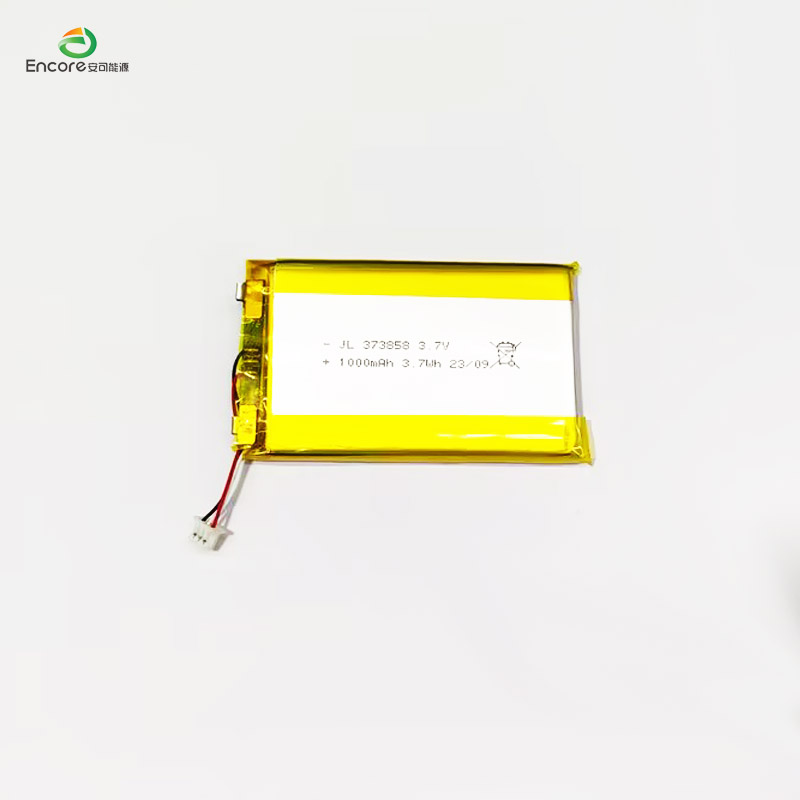What are the Advantages and Future Trends of Li Polymer Batteries?
2025-10-23
Lithium polymer (LiPo) batteries have become essential in powering modern electronics, drones, wearables, and energy storage systems. This article provides a comprehensive introduction to Li polymer batteries, delving into their working principles, key specifications, advantages, challenges, and future directions.
What is a Li Polymer Battery?
Definition and Working Principle
A Li polymer battery is a subclass of lithium-ion battery technologies that uses a polymer electrolyte — typically a gel or solid polymer composite — instead of a liquid electrolyte. The “polymer” in LiPo refers to this non-liquid medium, which provides structural flexibility and safety benefits.
Internally, a Li polymer battery consists of:
-
A cathode (usually a lithium metal oxide, e.g. LiCoO₂, LiNiMnCoO₂)
-
An anode (usually graphite or silicon-composite)
-
A polymer or gel electrolyte that allows lithium ion conduction
-
A flexible or pouch cell casing
During charge and discharge, lithium ions migrate through the polymer electrolyte between cathode and anode, while electrons flow through the external circuit to deliver power.
Key Parameters
Below is a representative summary of key specifications typically seen in Li polymer battery cells. These parameters vary by design, capacity, and application.
| Parameter | Typical Value / Range | Notes |
|---|---|---|
| Nominal Voltage | 3.7 V per cell | Standard for single LiPo cell |
| Charge Voltage | 4.2 V maximum | Must not exceed to avoid damage |
| Capacity | 100 mAh to several Ah | Depends on size and application |
| Energy Density | 150–250 Wh/kg | High energy density |
| Cycle Life | 300–1,000 cycles | Application-dependent |
| Discharge Rate (C) | 0.5C to 10C or more | High discharge possible |
| Operating Temperature | –20 °C to +60 °C (typical) | Ambient and thermal design limits |
These parameters provide a benchmark reference; actual values depend on chemistry mix, cell design, and quality grade.
Central Thesis
This article argues that Li polymer batteries offer a highly favorable balance of energy density, form factor flexibility, light weight, and safety, making them well suited for portable electronics, drones, electric vehicles, and energy storage systems. The evolution and optimization of Li polymer technology—including solid-state electrolytes, fast charging, and improved cycle life—will further propel their adoption in future power systems.
Why Choose Li Polymer Batteries? (Advantages & Challenges)
Advantages of Li Polymer Batteries
High energy density and light weight
Li polymer batteries generally deliver energy densities competitive with cylindrical or prismatic lithium-ion designs, but with reduced packaging weight due to flexible casing and absence of heavy metal can enclosures.
Design flexibility and custom form factors
Because Li polymer batteries can be fabricated in pouch or sheet form, they allow for thin, curved, or custom-shaped battery packs — ideal for slim devices, wearables, and irregular shapes.
Better safety under mechanical deformation
The polymer or gel electrolyte is less prone to leakage compared to liquid electrolytes. Combined with flexible packaging, Li polymer cells can better absorb mechanical stress with lower risk of rupture or leakage.
Lower self-discharge and better performance retention
Li polymer cells tend to have good self-discharge characteristics over storage, making them more reliable in long shelf-life applications.
High discharge rate capability
Many LiPo cells support high C-rate discharge (2C, 5C, or more), which suits high-current applications like drones, RC models, and power tools.
Challenges and Trade-offs
Cycle life limitations
Relative to some advanced lithium-ion formats, Li polymer batteries may exhibit reduced cycle life under aggressive use or deep cycling, especially at high temperature or high C-rate.
Swelling and mechanical stress
Polymer electrolyte systems are more susceptible to swelling due to gas generation or thermal stress. Engineering to mitigate swelling is essential.
Stability under extreme environments
Operation under very low or very high temperatures may degrade performance or safety. Low-temperature ionic conductivity of polymer electrolytes is often limited.
Cost and manufacturing complexity
Producing stable, high-performance polymer electrolytes with good ionic conductivity and mechanical integrity can be more expensive. Yield control and quality assurance are critical.
Safety concerns with overcharge and abuse
While safer than liquid electrolytes in some respects, LiPo cells still require protection circuits (BMS) against overcharge, overdischarge, short circuits, thermal runaway, and cell mismatch.
Comparative Perspective
Compared with standard liquid-electrolyte lithium-ion batteries, Li polymer (LiPo) offers improved packaging flexibility and safety but often at the cost of more careful manufacturing and thermal management. Compared with future solid-state designs, Li polymer remains a pragmatic mainstream option for many high-performance products today.
How to Design, Manufacture, and Optimize Li Polymer Batteries
To fully exploit the advantages and minimize drawbacks, a systematic approach is needed across design, material selection, production, and system integration. This section examines key steps and considerations.
Material and Chemistry Selection
Cathode materials
Common cathodes include NCA (nickel cobalt aluminum), NCM (nickel cobalt manganese) mixes, LiFePO₄, etc. High-nickel blends enhance energy density, but require stability control.
Anode materials
Graphite remains standard, with silicon-doped or silicon-oxide composites used to improve capacity. Anode stability and SEI (solid electrolyte interphase) integrity are critical.
Polymer electrolyte systems
Options include gel polymers (liquid infused in polymer matrix), dry solid polymers, or composite polymers with ceramic fillers to enhance ionic conductivity and mechanical strength.
Additives and stabilizers
Incorporating flame retardants, overcharge inhibitors, film-formers, and conductive additives can improve safety, cycle stability, and high-rate performance.
Cell Design and Packaging
Electrode architecture
Optimizing electrode thickness, porosity, and coating uniformity is necessary to reduce internal resistance and balance energy vs power.
Pouch or laminated packaging
Flexible pouch cells use layered films (e.g., aluminum-laminates) with sealant layers. Edge sealing, tab design, and pressure control ensure durability.
Thermal management
Heat spreaders, conductive additives, and packaging design (e.g. thin profiles for heat dissipation) mitigate hotspots.
Cell balancing and protection
Packaging includes tabs and connectors to permit BMS integration. Voltage, current, and temperature sensors must be placed strategically.
Manufacturing Process
A typical Li polymer battery manufacturing flow:
-
Electrode coating and drying
-
Electrode calendaring and slitting
-
Stack or winding assembly
-
Electrolyte filling or gel injection
-
Vacuum drying / formation cycling
-
Aging, testing, and grading
-
Packaging, sealing, and inspection
Quality control at each step (e.g. thickness uniformity, leak testing, capacity testing) is crucial to yield high performance and safety.
Optimization Strategies and Trade-offs
Cycle life vs energy density
Higher energy density often strains stability; selecting moderate loading and protective additives may extend life.
Fast charging
To support fast charge, low internal resistance and stable SEI are needed. Pulse charging strategies or temperature ramp controls may help.
Thermal and mechanical robustness
Using fillers (e.g. ceramic particles) in polymer electrolyte or reinforcing films can reduce swelling and mechanical strain.
Aging and calendar life
Packaging and electrolyte stabilization help retard degradation over time, which is important for backup power or energy storage.
Safety monitors and BMS integration
A robust Battery Management System (BMS) is imperative—monitoring voltage, current, temperature, and executing protective control.
Future Trends, Market Prospects & Use Cases
Emerging Trends in Li Polymer Battery Technology
Solid-state polymer hybrids
Hybrid designs combining polymer electrolytes with solid ceramic or glass phases aim to further improve ionic conductivity, safety, and stability.
High-nickel cathodes with protective coatings
To push energy density, nickel-rich cathodes paired with advanced coatings or surface modifications reduce degradation and side reactions.
Silicon-rich anodes and advanced SEI engineering
Using silicon for higher capacity while managing expansion and SEI stability is a key research frontier.
Fast charging protocols and AI-based charge control
Adaptive charging algorithms that optimize current and voltage profiles can reduce stress and extend cycle life under fast charging.
Recycling, sustainable materials, and eco-design
Better recycling techniques, greener binders, and avoidance of rare metals will shape the sustainability of LiPo adoption.
Market Growth and Demand Drivers
-
Consumer electronics — smartphones, tablets, wearables where compact, thin power sources matter
-
Drones, UAVs, and electric flight — where weight-to-energy ratio is critical
-
Electric vehicles (especially two-wheelers or auxiliary systems) using pouch cells
-
Energy storage systems (ESS) — for grid or home, where packaging flexibility helps
-
Medical devices, IoT, and backup systems
The increasing emphasis on lightweight, high-performance, and safe batteries will continue to push Li polymer designs forward in many sectors.
Challenges on the Road Ahead
-
Scalability and cost reduction of advanced polymer materials
-
Ensuring reliable cycle life and safety under real-world conditions
-
Regulatory standards and certification for new chemistries
-
Environmental regulation, recycling, and end-of-life management
-
Supply chain constraints for battery-grade materials
Use Case Scenarios
-
A drone manufacturer seeks a high-discharge, lightweight battery. LiPo cells with 10C rating and thin pouch design are ideal.
-
A wearable startup needs an ultra-thin battery that contours to device shape. Customized LiPo modules can be integrated into curved casings.
-
An energy storage integrator designs a modular rack of LiPo-based modules; the flexibility simplifies cooling and layout.
-
In consumer electronics, designers push toward bezel-less phones, foldables, and flexible devices — LiPo is a key enabler.
FAQ: Common Questions on Li Polymer Batteries
Q1: How long can a Li polymer battery last (in terms of cycles)?
A1: Under moderate operating conditions (e.g. 0.5C to 1C cycling, room temperature, partial depth-of-discharge), a well-designed Li polymer battery can offer 300 to 1,000 cycles before reaching 80% of its initial capacity. Cycle life depends on factors including electrode chemistry, electrolyte stability, temperature, and charge/discharge profiles.
Q2: Are Li polymer batteries safer than conventional lithium-ion ones?
A2: Li polymer batteries tend to be safer in mechanical stress and less prone to leakage, thanks to their gel or polymer electrolyte and flexible pouch packaging. However, they still require protective circuits (BMS), proper thermal design, and safety engineering to prevent overcharge, over-discharge, and thermal runaway.
Li Polymer Batteries Shaping the Future
Li polymer batteries bring together a compelling combination of energy density, flexibility, and safety. Through careful material selection, cell design, and system integration, they are already powering drones, consumer electronics, and innovative energy systems. Ongoing advances—such as hybrid solid polymers, optimized charge control, and sustainable materials—promise to push performance, longevity, and cost further.
Encore continuously invests in research and development of advanced Li polymer battery solutions, delivering tailored, high-quality modules for a wide range of applications. For inquiries about custom designs, technical specifications, or partnership opportunities, please contact us.



